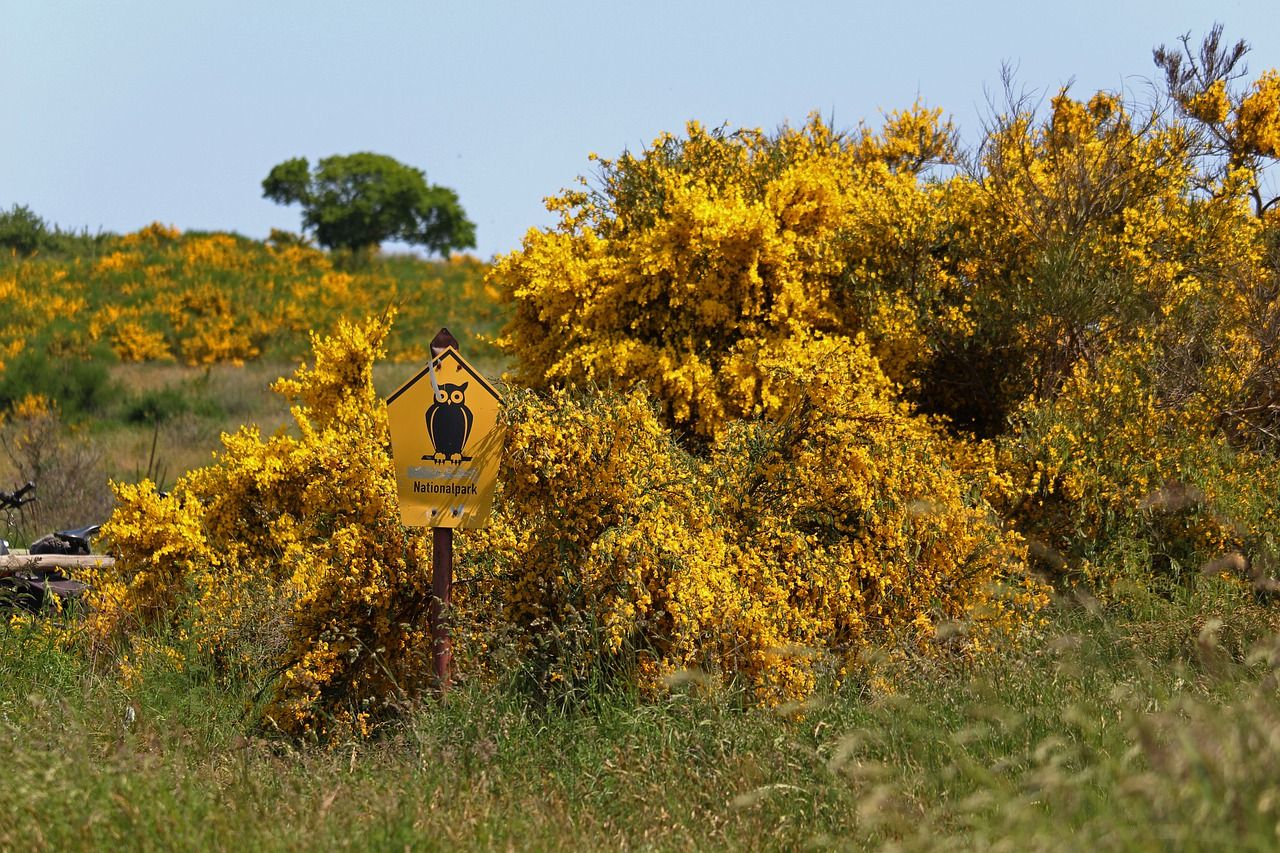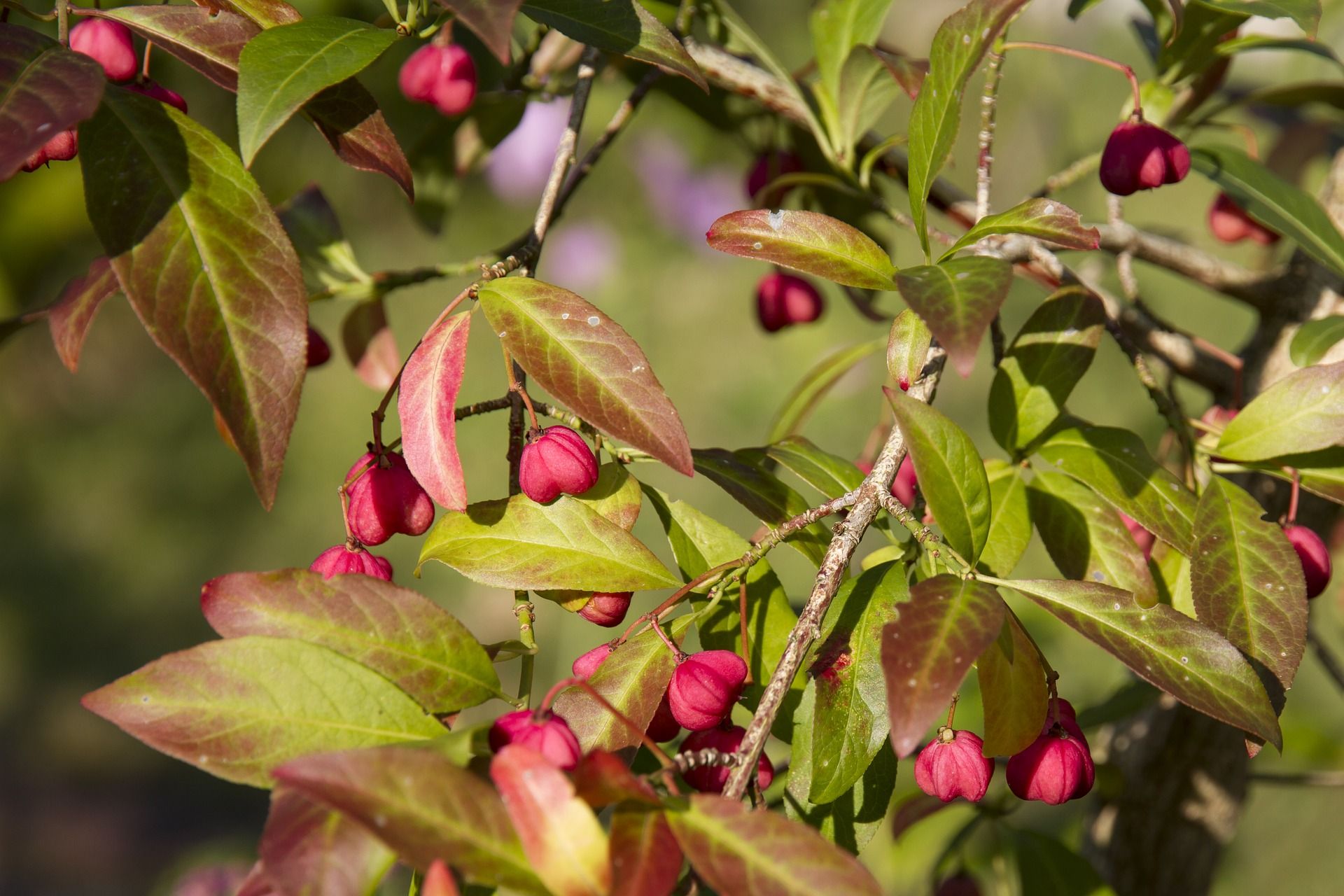Woody plants for small gardens
Small gardens need slow-growing and small-crowned trees that are not oversized, even when fully grown.
A common misconception is that you can keep a tree small by pruning it appropriately. Every tree has an aspiration to reach its genetically predetermined size. In the case of a fruit tree, the final size is determined by the rootstock.
So, when planting a new tree, one should consider how much space one has available and select the tree/shrub accordingly. Otherwise one is constantly to hold the copse by mutilating cut measures in its borders.
Perhaps it is simply that the space in the front garden is not sufficient for a tree and one better on several shrubs evades, which can then develop in their natural growth.
So if you choose well, then you can save on pruning for many years (fruit trees excluded), and unlike topiary hedges, our shrubs will bloom and bear fruit. Wild shrubs in the garden, be they single specimens or even long, double-rowed hedges, mean food, retreat and hibernation for countless animals. For us, it means beauty and adornment in our garden.
And from the fruits we can conjure up delicious, vitamin-rich juices, jams and liqueurs in autumn.
To return to the immense ecological value of wild shrubs: Did you know that the salt willow, black elderberry or mountain ash each feed on over 100 species of insects?
Do you know how many there are in the forsythia, which is represented in every garden, no matter how small?
Forsythia versus sal willows.
ZERO - yes, just no one at all, unfortunately. The flowers are sterile - no nectar, no pollen, nothing. That's a bit tragic - especially when you consider the sheer number of these shrubs, which originated in China. If all these forsythia, or even just a fraction of them, were to be replaced by willows blooming at about the same time, that would be quite a step forward in terms of biodiversity in this country; above all, the spring buffet for wild bees and honeybees would be much richer.The saltwillow, for example, also called the palm catkin because it is traditionally used for tying palms for Palm Sunday, is one of the most important food sources for early-flying butterfly species and, of course, for wild and honey bees.
Or even the cornelian cherry - it's a perfect substitute for the forsythia that shines in bright yellow. It has, in my opinion, even prettier, delicate yellow flowers that open in mild weather as early as March, and are hotly sought after by early-flying insects.

Sand bee (Andrena flavipes) on willow blossom.
About thuja and cherry laurel
And if the exotics thuja and cherry laurel, which are as ineffective for our fauna as forsythia, were replaced by native wild shrubs, we would also have done a lot to combat the dramatic decline of our songbirds in the landscape. Feeding birds in the winter is certainly an absolutely sensible measure, but it is not enough if habitats and nesting sites are lacking.Therefore, let's plant native shrubs - whether as individual specimens or as a hedge, and preferably with a perennial border at ground level. When buying in the nursery ask for the particular wild form. It always has the highest ecological value.

| Name | Name | Wuchshöhe (m) | Blütenfarbe/ Fruchtfarbe |
Blühzeitpunkt |
| Feld-Ahorn | Acer campestre | 5-10 m kompakte Krone |
gelbgrün braun |
F |
| Kornelkirsche | Cornus mas | 5-8 m essbare Früchte |
gelb rot |
F |
| Wildapfel | Malus sylvestris | 5-10 m kleinkronig, nicht essbare Früchte |
weißrosa D rotgelb |
F |
| Wildbirne | Pyrus pyraster | 5-10 m kleinkronig, nicht essbare Früchte |
weiß gelb |
F |
| Mehlbeere | Sorbus aria | 5-10 m Früchte und Herbst- laub attraktiv |
weiß rot |
F |
| Name | Name | Wuchshöhe (m) | Blütenfarbe/ Fruchtfarbe |
Blühzeitpunkt |
| Moor-Birke | Betula pubescens | 6-12 m schlanker, pyramidaler Wuchs |
gelb braun |
FF-F |
| Trauben-Kirsche | Prunus padus | 5-8 m rel. schnellwüchsig, Früchte klein, nicht essbar |
weiß D schwarz |
F-H |
| Sal-Weide | Salix caprea | 4-7 rel. kleinkronig, wert- volle Bienenweide |
gelb D |
FF |
| Vogelbeere (Eberesche) |
Sorbus aucuparia | 7-12 m attraktive Beeren, gekocht essbar |
weiß rot |
H |
| Baum-Weide | Salix waldsteiniana | bis 1 m für Kiesgärten oder Balkon geeignet |
weiß weiß |
F |
| Name | Name | Wuchshöhe (m) | Blütenfarbe/ Fruchtfarbe |
Blühzeitpunkt |
| Felsenbirne | Amelanchier ovalis | 2-3 m essbare Früchte, schönes Herbstlaub |
weiß D blau |
F |
| Berberitze Sauerdorn |
Berberis vulgaris | 2-3 m essbare Früchte, stark dornig |
gelb rot |
H |
| Behaarter Ginster | Genista pilosa | 0,4 m Zwergstrauch für für trockenheiße Lagen |
gelb braun |
F |
| Färber-Ginster | Genista tinctoria | 1 m Sommerblüte |
gelb schwarz |
S |
| Strauchwicke | Hippocrepis emerus | 1-2 m gefiedertes Laub, heimisch im SW |
gelb braun |
F |
| Liguster | Ligustrum vulgare | 1-4 m L.lodense = Zwerg- form, halbimmergrün Früchte leicht giftig, trockenresistent, auch im Halbschatten |
gelbweiß schwarz |
H |
| Mispel | Mespilus germanica | 2-5 m Früchte nach Frost essbar, roh oder gekocht |
weiß orange |
H |
| Schlehe (Schwarzdorn) |
Prunus spinosa | 3-5 m 'Wildobst' nach Frosteinwirkung zur Zubereitung von Marmelade und Likör geeignet |
weiß tiefblau |
F |
| Kreuzdorn | Rhamnus cathartica | 2-3 m dornig |
gelbgrün schwarz |
H |
| Essig-Rose | Rosa gallica | 1 m dornig |
rosa D |
H |
| Wein-Rose | Rosa rubiginosa | 2-3 m wie alle Wildrosen 1x blühend, dornig |
rosa D rot |
H |
| Wolliger Schneeball | Viburnum lantana | 3-5 m große Blüten- und Fruchtdolden |
weiß rot/schwarz |
H |
| Name | Name | Wuchshöhe (m) | Blütenfarbe/ Fruchtfarbe |
Blühzeitpunkt |
| Haselnuss | Corylus avellana | 3-6 m je sonniger desto mehr Früchte, Weiden- ruten als Flecht- material geeignet |
weiblich rötlich männlich gelb |
FF |
| Gemeiner Seidelbast | Daphne mezereum | 1 m alle Teile stark giftig! |
rosalila D |
FF |
| Weißdorn | Crataegus monogyna (eher sonnig), laevi- gata (eher schattig) |
3-6 m Blüten,, Blätter, Früchte herzstärkend, dornig 'Kleinbaum' |
weiß rot |
H |
| Pfaffenhütchen | Euonymus europaeus | 3-5 m kann auch feucht stehen, giftig! |
grün orange |
H-S |
| Rote Heckenkirsche | Lonicera xylosteum | 2 m rote Beeren sind giftig für Menschen, Pferde, Hunde, Katzen |
weiß rot |
F-H |
| Schwarze Heckenkirsche | Lonicera nigra | 1-1,5 m bis in subalpine Lagen Schattenpflanze, ähnlich giftig wie Rote Heckenkirsche |
hellrosa schwarz |
F-H |
| Schwarze Johannisbeere | Ribes nigrum | 1,2-1,5 m geeignet für Gelee, Saft und Likör-Zube- reitung |
weiß schwarz |
H |
| Rote Johannisbeere | Ribes rubrum | 1-1,5 m | weiß rot |
H |
| Stachelbeere | Ribes uva-crispa | 1-1,2 m | weiß gelbgrün/rot |
H |
| Brombeere | Rubus fruticosus | 2-3 m | weiß schwarz |
S |
| Faulbaum | Rhamnus frangula | 1-4 m schwach giftig feuchtigkeitsliebend, ph eher sauer, Futter- pflanze für Zitronen- falter-Raupen |
grünweiß rot/schwarz |
null |
| Hundsrose | Rosa canina | 2-4 m häufigste Wildrose |
rosa D rot |
H |
| Alpen-Hagrose | Rosa pendulina | 1-2 m blüht auch im Schat- ten, fast dornenlos auch im Mittelgebirge |
dunkelrosa D | H |
| Schwarzer Holunder | Sambucus nigra | 3-6 m schattenverträglich Früchte roh leicht giftig sehr alte Kultur- und Heilpflanze |
weiß D schwarz |
H |
| Pimpernuss | Staphylea pinnata | 3-5 m duftende Blüten, essbare Samen, nur in BY und BW wild vork. |
weiß D rotbraun |
H |
| Gemeiner Schneeball | Viburnum opulus | 3-4 m rotes Herbstlaub, kann feucht stehen |
weiß rot |
H |














